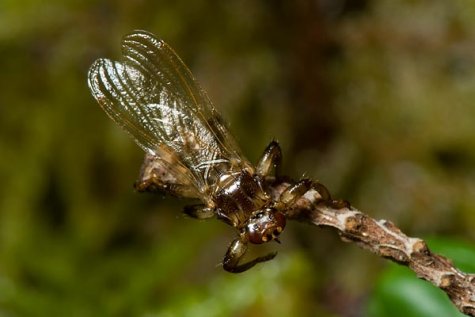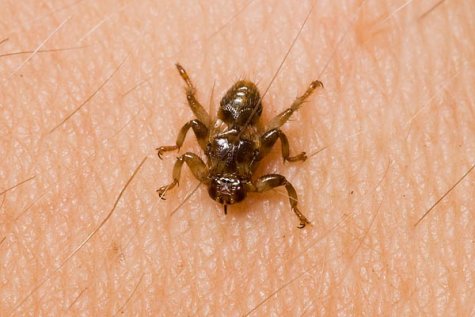How the deer fly loses its wings
Photos: Arne Ader
Translation: Liis
Deer fly
| Deer fly; deer ked |
Põdrakärbes
|
Lipoptena cervi |
For some weeks deer flies have been seen and felt in forests, to get used to. The great scourge period of forest dwellers and forest ramblers is beginning.
In the beginning of early autumn the deer fly hatch in masses. They are poor flyers, and having exited from the pupa the wings are used to fly to some nearby plant or bush. There they stay in wait of a “host animal“; when the victim is identified the wings are used for the last time to hit the host animal and to hide in its fur. The wings are broken off at the same time assuming that there will be no more use for them, and it is more comfortable to operate without them.
Having hidden in the elk’s fur the “bloodsucker“ must stand scrubbing against trees, wallowing in mud and more. Feet provided with long, serrated claws, and a body covering with hairs on the otherwise smooth chitin skeleton helps it to stay in the fur. Arne’s photos show everything quite nicely.
And of course deer flies bite. What use is the host’s blood to them? To feed the next generation, surely. The bite spot where the deer fly sucked blood mixed with its saliva swells and itches unpleasantly. In recent years it has been observed that sensitive individuals may get allergic reactions from bites.
On leaving the forest we have combs and beating our clothes to resort to; if it all threatens to become too bad we clear off from the woods ... To be a furry forest dweller is nothing to wish for in autumn.
Deer fly










